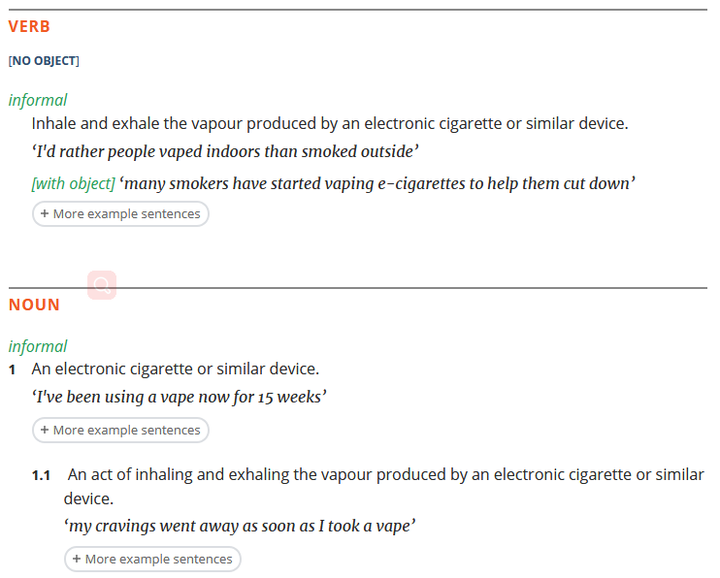
In 2014, Oxford Dictionaries selected the year's hot word, and "VAPE" stood out among a large number of competing words and became the word king of the year.
So what does VAPE mean?
The definition of VAPE was entered into Oxford Dictionary Network in August 2014, and its parts of speech can be verbs, nouns, and gerunds. The verb definition is: "inhale or exhale the vapor of an electronic cigarette or similar device". Nouns refer to electronic cigarettes and similar devices; as gerunds, they refer to the act of breathing electronic cigarettes. This definition distinguishes electronic cigarettes (called electronic cigarettes, E-cigs, or E-ciga,rettes in the past) from traditional cigarettes in English, and is undoubtedly of great significance to the e-cigarette industry. Also nominated was the related name Vaping (vaping or its phenomenon).
Vape is derived from the abbreviation of Vapour (vapor) or Vaporize (vaporization), with the popularity of electronic cigarettes, the phenomenon of vaping has become more and more popular. Vape usage was 30 times higher in 2014 than it was two years earlier, peaking in April of that year. The Vape Cafe, the UK’s first vaping lab, opened at this time; protests against New York’s ban on indoor vaping were launched; and the Washington Post, BBC a, and Telegraph,h, and other media scrambled to discuss the phenomenon of vaping.

People tracked and found that the word vaping appeared in the public eye long before e-cigarettes were commercialized.
Vaping was mentioned in the early'80ss as an invention from the late '70s.
On February 16, 1980, according to The Spokane Daily Chronicle, the device was invented by computer microprocessor entrepreneur J. Phillip Ray.
Unlike previous inventions by Herbert A. Gilbert, nicotine came in the form of "vapor" for the first time. (Herbert's device uses hot air and does not contain nicotine).
Dr. Jacobson (the first to commercialize the device) and others conducted a trial on the device, describing the use of the device as "Vaping" and those who use it as "Vapers".
An experiment they conducted also yielded similar results to modern scientific experiments. The subjects showed reduced levels of cotinine and levels of carbon monoxide that were the same as those of non-smokers; the gas appeared to be more effective for experienced people compared to novices.
Dr. Jacobson believes that these devices are found to be more effective for inexperienced users because they have to learn to self-titrate nicotine like smokers - that is, they have learned to use the devices to Get enough nicotine to meet their physical needs.
According to Medical World News (pictured below), the devices were also effective as a replacement for cigarettes, as all the smokers tested were able to reduce their cigarettes.



